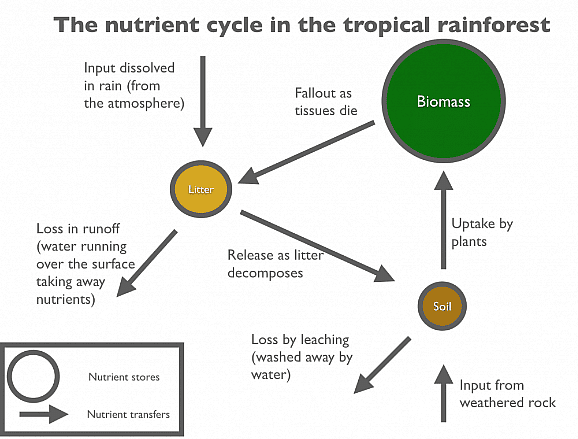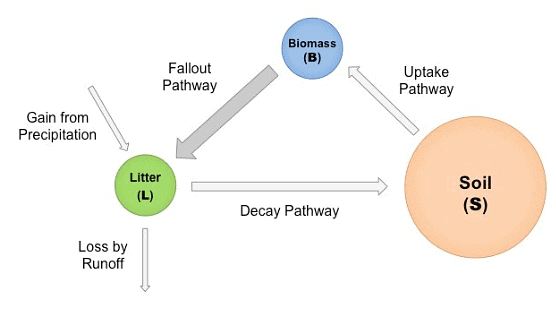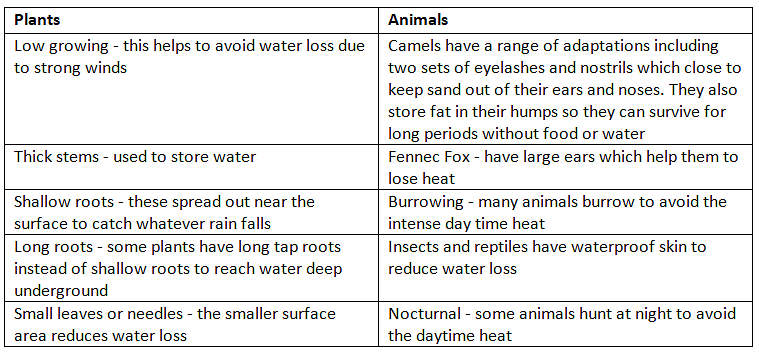Year 11 Exam > Year 11 Notes > Geography for GCSE/IGCSE > Ecosystem Characteristics
Ecosystem Characteristics | Geography for GCSE/IGCSE - Year 11 PDF Download
Tropical Rainforest Ecosystem Characteristics
- The Tropical rainforest (TRF) biome is primarily located in a region between 15 degrees north and 15 degrees south of the equator within the equatorial climate zone.
- Occupying just 6% of the Earth's surface, the key tropical rainforest areas are situated in various countries, including:
- The Amazon, the largest remaining rainforest globally, commonly linked with Brazil but extending into parts of seven other nations.
- Central America, encompassing sections of Belize, Costa Rica, El Salvador, Guatemala, Honduras, Nicaragua, and Panama.
- Central Africa, covering Cameroon, the Central African Republic, the Republic of Congo, the Democratic Republic of Congo (DRC), Equatorial Guinea, and Gabon.
- Indo-Malaysia, which includes Malaysia, Indonesia, and several other countries in Southeast Asia.
Biodiversity in Tropical Rainforests
- Tropical Rainforests (TRFs) host the highest biodiversity of plants and animals globally.
- Biodiversity in TRFs:
- Estimates suggest that TRFs are home to over 50% to 80% of the world's plant and animal species.
- In a mere 10km² area, one can find up to 1,500 flowering plants, 750 tree species, 400 bird species, and 150 butterfly species.
Nutrient Cycle
Tropical Rainforests (TRFs) exhibit a unique nutrient cycle due to their climatic conditions:
- The TRFs experience a perpetual growing season characterized by consistent high rainfall and temperatures throughout the year.
- The nutrient cycle in TRFs is rapid, facilitated by the continuous shedding of leaves by trees and plants.
- The abundant moisture and high temperatures accelerate decomposition and recycling of nutrients in the ecosystem.
- Rapid plant growth in TRFs results in swift nutrient uptake from the soil.

Layers of the Tropical Rainforest
The tropical rainforest consists of five distinct layers:
- Ground layer (0m)
- Shrub layer (3-4m)
- Under canopy (15m)
- Canopy (30m)
- Emergents (45-55m)

Adaptations
- The tropical rainforest (TRF) hosts plants and animals well-suited to its unique climate.

Food web
The TRF sustains a complex food web comprising Producers, Primary consumers, Secondary consumers, and Tertiary consumers.
- Producers
- Primary consumers
- Secondary consumers
- Tertiary consumers

Question for Ecosystem CharacteristicsTry yourself: What is the primary factor that contributes to the rapid nutrient cycle in tropical rainforests?View Solution
Hot Desert Ecosystem Characteristics
- Hot desert biomes are predominantly located around the Tropic of Cancer and Tropic of Capricorn.
- Roughly 20% of the Earth's surface comprises hot desert ecosystems, encompassing regions such as:
- North America - encompassing the Mojave and Sonoran Deserts in the USA and Mexico.
- South America - including the Sechura Desert in Peru and the Atacama Desert in Chile.
- Africa - consisting of the Sahara, Kalahari, Namib, and Somali Deserts.
- Middle East - featuring the Arabian Desert.
- Asia - housing the Dasht-e Lut in Iran, the Gobi, Turkestan, Thar, and Taklamakan Deserts.
- Oceania - hosting the Australian Desert.
Biodiversity
- Hot deserts exhibit one of the lowest levels of biodiversity on Earth.
- The biome supports around 5000-6000 plant species, numerous invertebrates, and up to 20 bird species.
Nutrient cycle
- Plant growth in hot deserts is restricted by extreme temperatures and water scarcity.
- The nutrient cycle is slow, with most nutrients being retained in the soil.
- Hot desert nutrient cycle:

- The soils in hot deserts are sandy, coarse, and low in nutrients due to the lack of organic matter.
Adaptations
- Plants and animals in these regions have evolved remarkable adaptations to endure the harsh conditions of extreme temperatures and minimal rainfall.

Food Web
In hot deserts, the food web is intricate, involving:
- Producers
- Primary consumers
- Secondary consumers
- Tertiary consumers
Hot desert food web:
Question for Ecosystem CharacteristicsTry yourself: What is the primary factor that restricts plant growth in hot deserts?View Solution
The document Ecosystem Characteristics | Geography for GCSE/IGCSE - Year 11 is a part of the Year 11 Course Geography for GCSE/IGCSE.
All you need of Year 11 at this link: Year 11
|
57 videos|70 docs|80 tests
|
FAQs on Ecosystem Characteristics - Geography for GCSE/IGCSE - Year 11
| 1. What are some common animals found in the Tropical Rainforest ecosystem? |  |
Ans. Some common animals found in the Tropical Rainforest ecosystem include jaguars, toucans, sloths, and tree frogs.
| 2. How does the food web work in the Tropical Rainforest ecosystem? |  |
Ans. The food web in the Tropical Rainforest ecosystem consists of various levels, with plants being eaten by herbivores, which are then consumed by carnivores. Decomposers break down dead plants and animals, completing the cycle.
| 3. What adaptations do plants in the Tropical Rainforest ecosystem have to thrive in the environment? |  |
Ans. Plants in the Tropical Rainforest ecosystem have adaptations such as broad leaves to capture sunlight, drip tips to shed excess water, and buttress roots for support in the dense forest.
| 4. How does the Hot Desert ecosystem differ from the Tropical Rainforest ecosystem? |  |
Ans. The Hot Desert ecosystem has extreme temperatures and low precipitation, while the Tropical Rainforest ecosystem has high temperatures and abundant rainfall. The plant and animal species also differ significantly between the two ecosystems.
| 5. What role do humans play in the conservation of the Tropical Rainforest ecosystem? |  |
Ans. Humans play a crucial role in the conservation of the Tropical Rainforest ecosystem by supporting sustainable practices, protecting endangered species, and advocating for the preservation of these vital habitats.
Related Searches

















